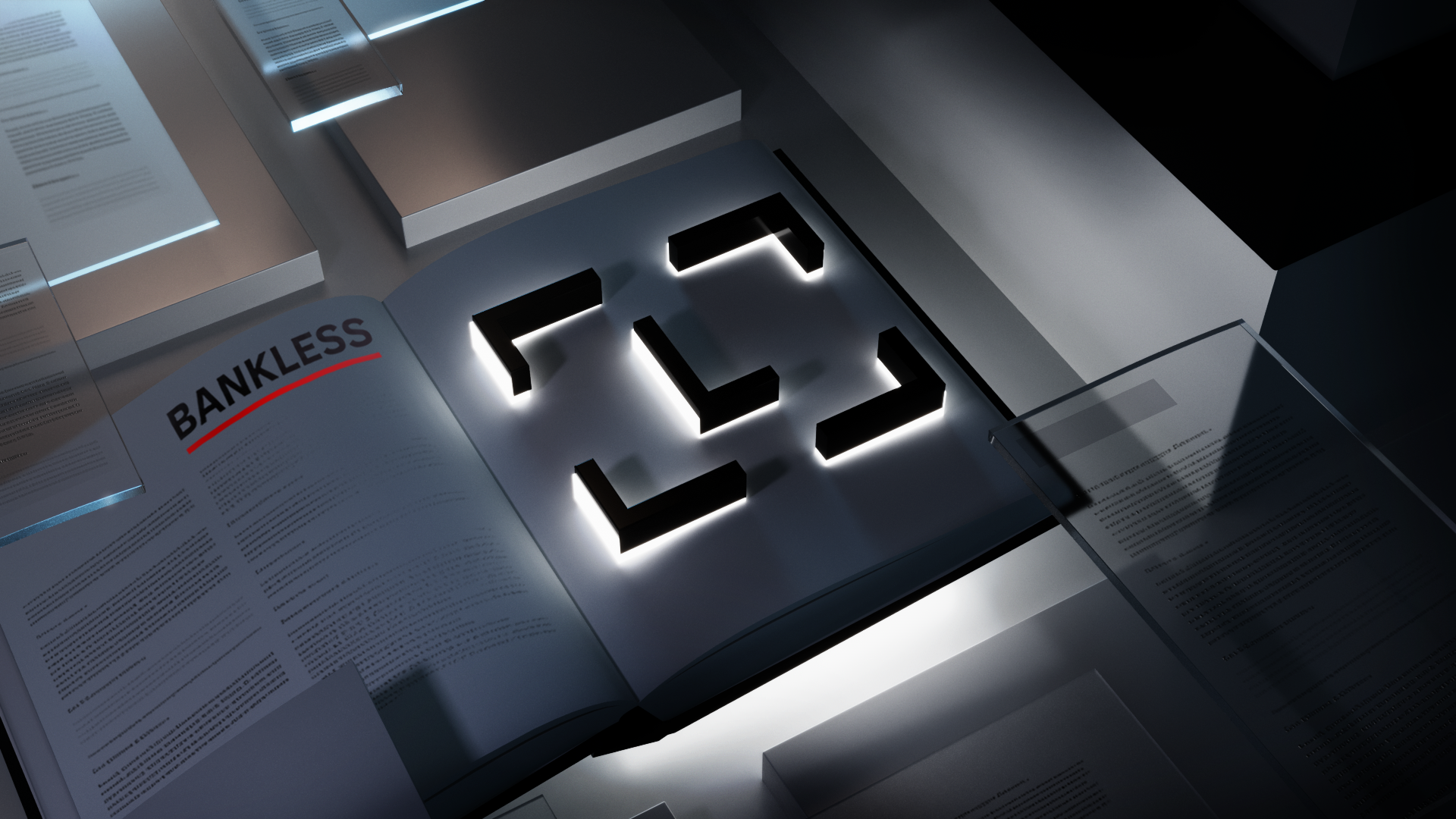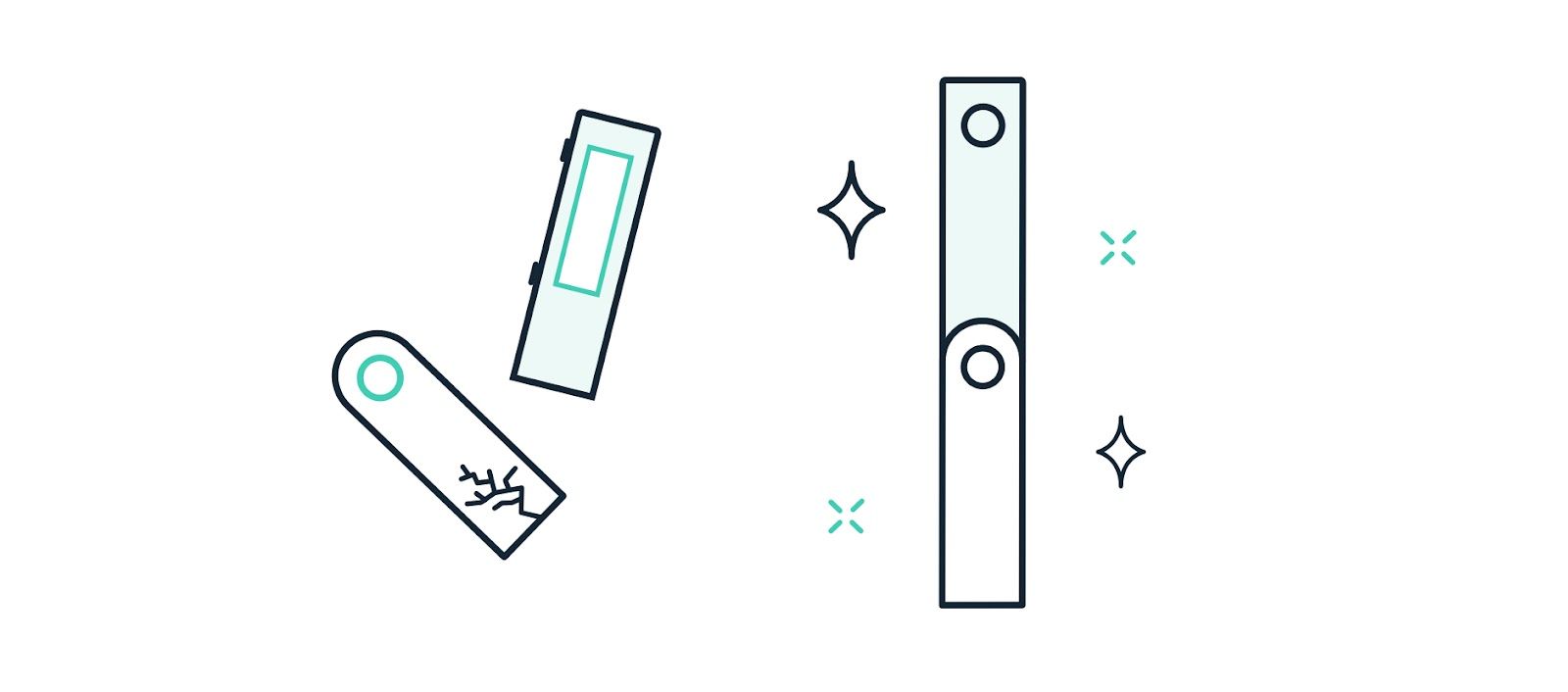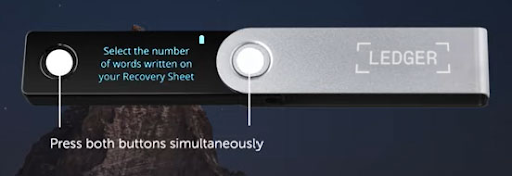How to Back Up and Store Your Ledger

⬆️ Level up your crypto experience with the full Guide:
- How to set up your Ledger
- How to back up and store your Ledger (👈 you are here)
- How to add and swap assets with your Ledger
- How to stake ETH with your Ledger
- How to use DeFi & NFTs with your Ledger
- Troubleshooting & FAQ
Securing your personal vault
Your Ledger is your very own vault—a cryptocurrency hardware wallet for secure, cold storage of your private keys. As such, every Ledger owner should be mindful of the dangers of potential loss of access to funds. As a physical device, your ledger is susceptible to theft, damage, loss, or even getting “bricked”, or rendered useless, from a failed firmware update.
To properly plan for your hardware wallet’s security, one should take into account the risk of each type of loss, as well as personal circumstances. What is your personal exposure to these risks, and how much value are you storing on your Ledger? If you plan to hold significant sums, taking security steps for storage and backing up your device become more critical and should be considered a priority responsibility of ownership.
In this article, there are two main components. They are:
- How to Back-up your Ledger (by creating a mirror device)
- How to Store your Ledger (and recovery phrase + PIN)
How to Back-up your Ledger
To fully understand the need for a backup device, it is worthwhile to consider the main reasons every serious crypto user should have one.
Mitigating the incidence of loss/destruction
As with any physical possession, there is the risk of your Ledger being lost or stolen. If you have a backup device, it is feasible for you to retain immediate access to your funds even in the event of a total loss of the primary device.
Damage can occur any number of ways—perhaps it is exposed to liquids, or a dog finds it by accident and chews on it. In rare cases, a software update failure can render the wallet “bricked” and unable to function.
You hate to think about more catastrophic things, but fires, tornadoes, hurricanes, and other “acts of God” can always happen. Preparation is key.

Even in the incidence of your primary Ledger being lost or stolen, you can act quickly to secure your crypto assets if you have a second backup device.
How to set up a Ledger backup
In the unfortunate event that your Ledger is lost, damaged, or compromised in any way, you may find that you still have access to your Ledger Live account, and you can still view or transfer crypto into your account. However, you will be constrained from moving crypto out of your account because your physical hardware wallet is responsible for signing outgoing transactions.
What do you need to restore access?
- A second Ledger hardware wallet
- Your original 24-word phrase
To do this you will set up your new device as a ‘full restore’. After doing this, the new device will serve as a mirror image of the initial device; granting you access to all your crypto. After creating this mirror ledger, it becomes imperative that you properly secure the two devices in different locations.
The restore process varies slightly, based on the Ledger variant in use.
Step 1 - Restore from recovery phrase
Press the button next to the USB port until the ledger logo appears to turn on the device.

Read the on-screen instructions and press left/right to move forward or backward. Keep moving forward until you get to the “Restore from recovery phrase”. Press both buttons simultaneously.

Step 2 - Choose your pin code
Press both buttons when “Choose PIN code” is displayed.

Press the left or right button to select a digit. Confirm each digit by pressing both buttons simultaneously. Select to ✓confirm your PIN code of 4 to 8 digits. Select ⌫ to erase a digit.

Enter the PIN code again to confirm it.
PIN Code security 101
- The choice for your PIN code should be made solely by you - this effectively unlocks your device and should not be directly influenced by any other party.
- The number of digits for maximum security is 8.
- Do not use a device that is supplied with a PIN Code or recovery phrase. If in doubt, contact Ledger Support.
Step 3 - Enter your recovery phrase
Select the length of your recovery phrase from the given options (12, 18, or 24). Remember your ledger recovery phrase has 24 words.

Input the first letter of word#1 by selecting them with the right or left button. Press both buttons simultaneously to confirm each letter.

Choose the correct word#1 from the suggested words and click both buttons to confirm.

Repeat this process until all 24 words are found and confirmed.

After confirming all the words in the recovery phrase, the device will display “Processing . . .”, followed by “Your device is ready”, once your private keys have been restored.

Your device is now ready, as the display on the ledger will show the option to “Access Dashboard”. Validate your selection by pressing both buttons simultaneously.

Installing your apps for a full restore
- You will need to install all the apps you have on your primary device on this new one as well.
- Connect your backup device to your computer and enter the PIN you set up the device with.
- Visit the Manager setting on the left pane of your Ledger Live account. Using your original list of accounts, install the corresponding apps until you have all the apps you need on your Ledger.
Understanding your Ledger mirror device restore process
- By setting up your secondary device, you restored your master private key to the device. Following this confirmation of the master private key, all other wallets that were on your primary device are generated mathematically. Because your Ledger is a deterministic hardware wallet, your master private key is used to generate a specific wallet for each crypto app you use.
- Your wallets are deterministically regenerated each time you install the relevant app.
- After installing all apps on the secondary device, you will find that both Ledgers are identical and all wallets will match with regards to addresses and balances.
How to Store your Ledger (Keys & PIN)
Securing your Ledger
After creating a backup of your Ledger, it is imperative that you keep both devices separate, with careful consideration not to reveal the location of either of these to anyone else, save perhaps your spouse or beneficiary.
Physically placing your secondary ledger in a separate geographic location, away from conspicuous or easily guessable hiding places, is a good idea. We might even suggest storage in a Faraday cage or bag that could protect your device from an electromagnetic pulse or cosmic radiation burst for that extra level of protection.
Securing your 24-word recovery phrase (mnemonic seed)
The 24-word recovery phrase (aka mnemonic seed phrase) is the only backup of your private keys and as demonstrated in this article, it allows you to restore the private keys that provide access to your crypto. Remember, Ledger does not store your private keys and has no way to restore this to you, if you ever lose it.
They are quite literally the keys to your (crypto) kingdom and must be guarded as such.
Key considerations for storage of your mnemonic seed
- Make sure that the 24-word recovery phrase is ONLY obtained from the device screen.
- Be meticulous in checking the spelling and list position of each recovery phrase.
- Hide your recovery sheet (with the mnemonic seed written on it in a physically secure space to ensure it is protected from loss or damage.
- Make sure to store the copies of this recovery phrase in a secure location, out of sight.
Key Points to Remember
- Do NOT share your secret 24-word recovery phrase with anyone else, for any reason. Ledger support will never request that you divulge your recovery phrase.
- Do NOT ever input your recovery phrase in a device that isn’t your hardware wallet.
- Do NOT take a picture (or video) of your recovery phrase
Securing your PIN code
During the setup of your Ledger, you select a pin code. Given the importance of this PIN code to the security of your crypto, you should keep these best practices top of mind.
- Choose a PIN code by yourself (without the influence of anyone else). Choose a PIN code that is hard to guess.
- Always enter your PIN code out of sight. Make sure there is no one watching you or there are no cameras positioned to compromise your security.
- Change your PIN code if necessary (or you feel your old PIN may have been compromised).
To change your PIN code:
- From the device dashboard, navigate to Settings > Security > Change PIN
- Choose a new PIN code of 4 to 8 digits in length. (8 digits is optimal)
- Confirm the new PIN code by entering it again.
- Enter your old PIN code to validate
- Your new PIN code is set and confirmed!
- Three wrong PIN code entries will reset your device, and will require your recovery phrase - keep this in mind!
Testing whether your stored recovery phrase is accurate
There may come a time when you wish to confirm whether your written recovery phrase is correct for a specific hardware wallet in your possession.
Perhaps you have multiple Ledgers that are not mirror devices, and you didn’t mark them or otherwise distinguish which recovery phrase card goes with which device. Or, maybe you are about to perform a firmware update and want to make extra sure your recovery phrase will restore the wallet, should an unlikely error occur during the update.
Ledger has an app that will allow you to confirm your recovery phrase directly on your hardware wallet!
- Open Ledger Live and connect your Ledger hardware wallet to the device running Ledger Live. Unlock the wallet with your PIN, and press both buttons to allow Ledger Live to access the wallet. Go to the Manager tab to view the apps that are downloaded onto your device.
- In the search bar, type “Recovery Check” and the app should appear below.
- Download the Recovery Check app as per the usual method.
- Running this app can be done without connecting the hardware wallet to any device. Follow the on-screen prompts and enter each word in your recovery phrase; if done correctly your Ledger will confirm a successful seed entry.
- Give yourself a good 15 minutes to complete this. The interface requires you to scroll to each letter in order to spell the beginning of the word until there are only a handful of possible seed words with those starting letters possible. Then you select the correct option and move on to the next word, repeating this process for all 24 words of the seed phrase.
Conclusion
Your Ledger is an important pillar of your crypto journey and you must take all the necessary steps to secure it. Remember to guard it religiously! Now that you know how to back up and store your ledger securely, let’s take a look at the next article in this series, “Adding and Swapping Assets with Ledger Live.”